Indoor drones developed by an Israeli startup are on security patrol.
They’re flying along the corridors of office buildings and they’re keeping an eye on warehouses, factories, data centers and other premises.
The AI-powered drones drop from their ceiling-mounted docking stations autonomously, fly their pre-planned route and raise an alert if they spot intruders, doors that should be closed, maintenance issues, missing fire extinguishers and more.
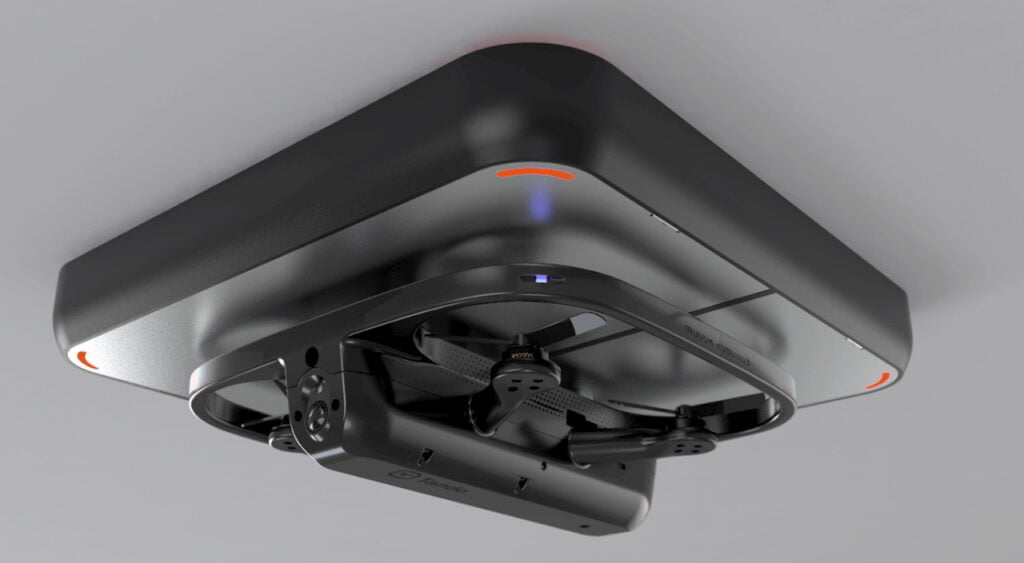
The job they do has traditionally been carried out either through human inspections or by fixed security cameras.
But unlike the human guards who would otherwise be on duty, the drones don’t get bored, they don’t need to nip outside for a cigarette, and they are ultra-reliable.
They also report far fewer false positives than sensors (think of the last time you heard a burglar alarm that was actually triggered by a burglar).
Indoor Robotics, based in Ramat Gan, near Tel Aviv, says it’s at the forefront of what’s called the “indoor monitoring market” with its Tando drones.
The future, says CEO Doron Ben David, is drones. They’re fitted with extra-high-res sensors and cameras that record 360-degree video and use AI to interpret what they see.
The company deployed its first indoor drones commercially a couple of years ago. Their biggest market currently is out-of-hours patrols in office buildings, after the workers have gone home.
But they also patrol factories, data centers and other sites on a 24-hour basis, flying over the heads of employees and avoiding obstacles.
Ben David says Osem’s Bamba factory, in Kiryat Gat, southern Israel, is among their customers.
Their drones constantly monitor warehouses where the country’s favorite peanut snack is stored. The biggest day-to-day risk is that a forklift operator will weaken the base of the huge metal stacking shelves by bumping into it – and fail to report it.
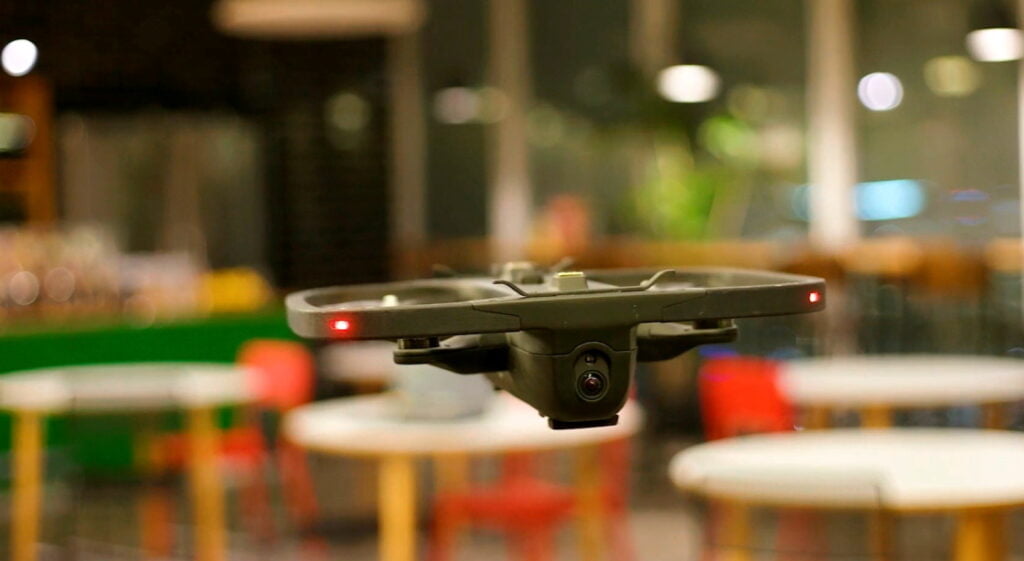
The potential consequences could be catastrophic. The drones fly up and down the aisles, inspecting every support and every shelf, checking that the ground-level plastic shields are in place, making sure no screws are missing, and looking for signs of damage.
The shelving can be 30 meters high, says Ben David, which makes it virtually impossible to carry out regular and reliable human checks. But flying that at that altitude is no problem for the drones.
They typically go on patrol every half hour, returning to their docking station for a quick battery top-up – giving them around 10 minutes of flying time – then returning to their work.
All of this is without any human intervention. The drones are completely autonomous, flying, recording and reporting all by themselves.
Sign up for our free weekly newsletter
SubscribeIf there is an emergency or an unexpected issue, they divert from their usual route to investigate.

Ben David says the company has made two key technological breakthroughs that allow the drones to function: mounting them on the ceilings and navigating them through the interior of a building.
“Our drones are actually located on the ceiling of the of the facility, which is a concept we are very proud of,” says Ben David.
“We were the first company and currently, as far as we know, the only company worldwide to implement such a solution.”
The big challenge, he says, was disconnecting the drone from the ceiling and starting the propellers without it hitting the ground.

The even bigger challenge was navigation. “When you’re outside, you have GPS, but when you get indoors, you need centimeter accuracy,” says Ben David.
“We had to develop our own method for indoor localization and mapping. When we started, we couldn’t find any solution that was good enough, so we did it ourselves.”
Indoor Robotics has clients in Israel and the US, and its drones also patrol a United Nations building in Spain.
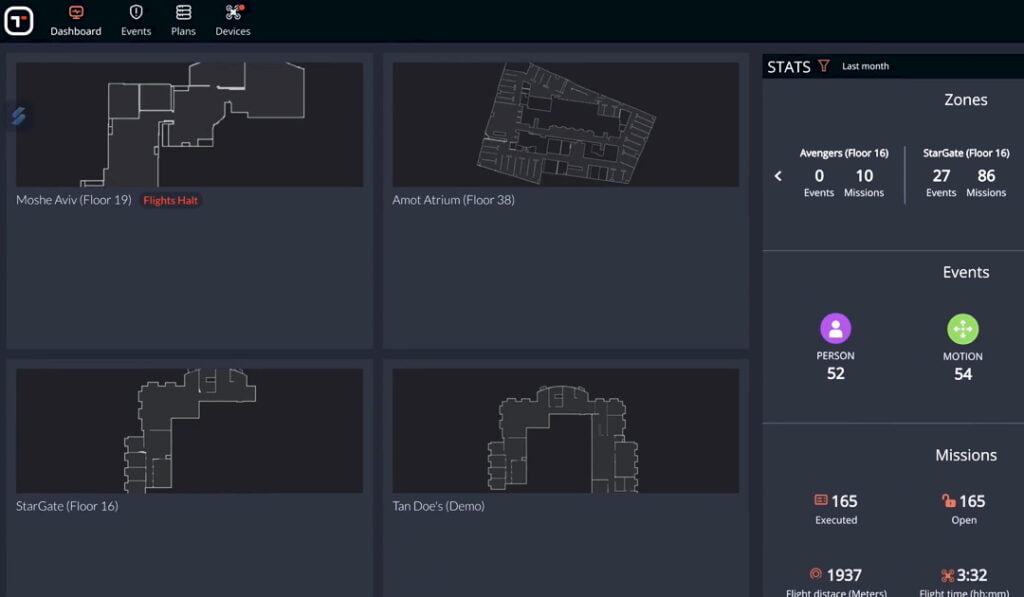
Other companies are developing floor-based robots, but they don’t have the same reach or maneuverability, says Ben David, and they need human supervision.
He says the startup’s closest rival is Swiss company Verity. It has drones able to monitor warehouse inventory, but doesn’t cover other venues like Indoor Robotics.
Indoor drones are a fraction of the cost of human patrols, says Ben David, who was former chief technology officer at the Space, Missiles and Systems division of Israel Aerospace Industries (IAI).
They’re also cheaper and more effective than surveillance cameras. He says an average shopping mall has 300 security cameras. “If you design the mall to work with our products, you could probably put in 100 cameras and five drones and get better coverage,” he says.
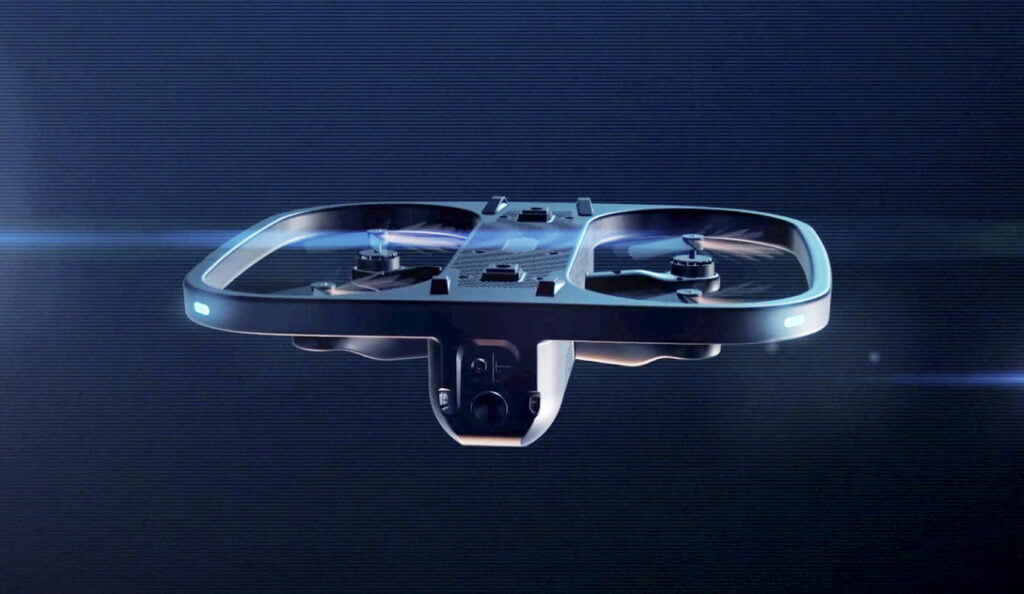
But indoor drones are still a surprise to most people, and that’s one of things that Ben David has to deal with.
He tells how a new cleaner at their own offices unexpectedly encountered a drone one morning at 5am and tried to fight it off with a broom.
“We really are disrupting a very old-fashioned industry,” he says, “and it takes time to gain trust.”
Related posts

Editors’ & Readers’ Choice: 10 Favorite NoCamels Articles

Forward Facing: What Does The Future Hold For Israeli High-Tech?

Impact Innovation: Israeli Startups That Could Shape Our Future


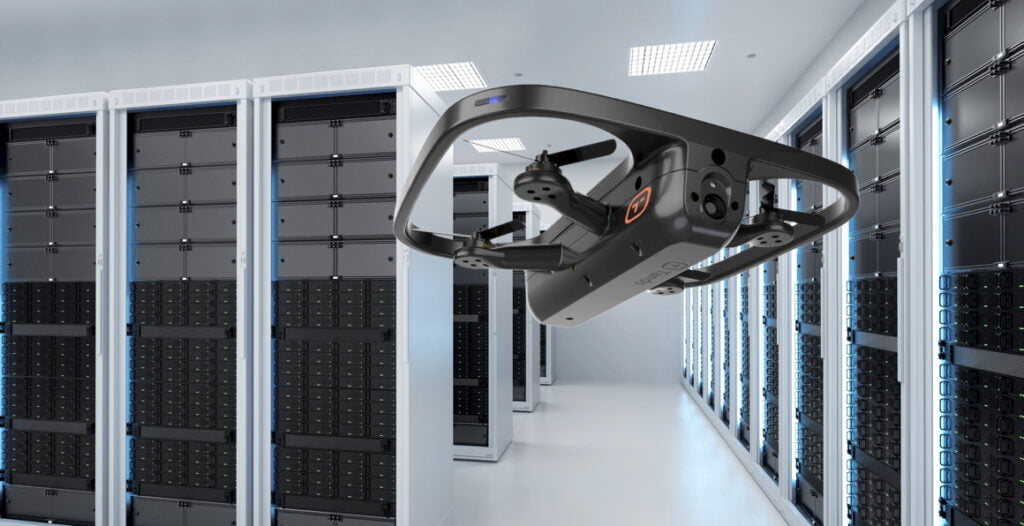

Facebook comments